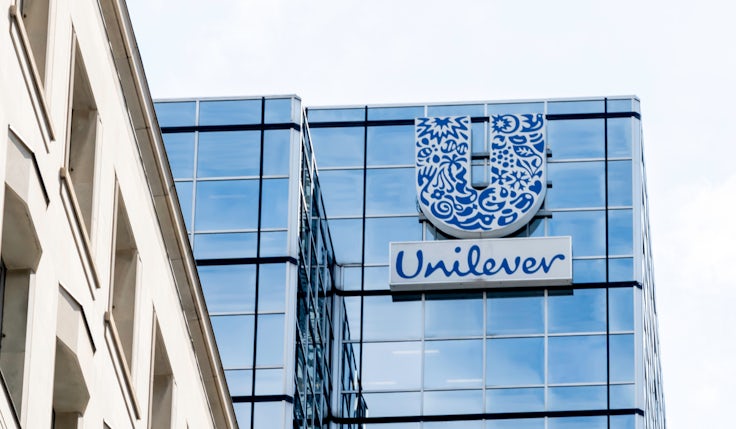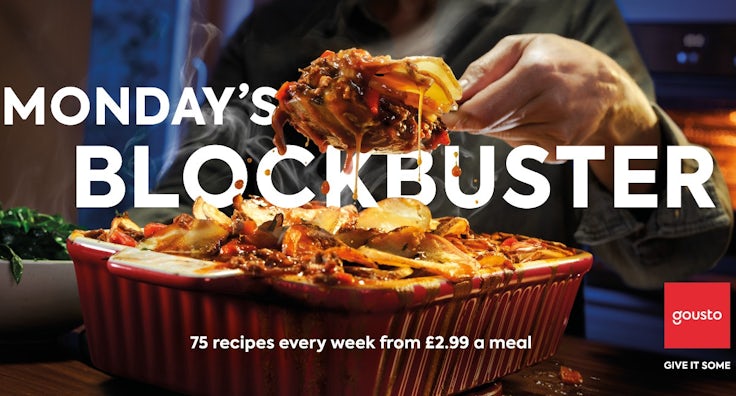‘Pairing ambition with real marketing rigour’: Gousto marketing VP on profitable growth
Following a period where profit was the priority, Gousto is now focusing on “sustainable growth” by chasing “share of stomach” rather than market share.
 A marketer’s priorities can differ vastly depending on the position of the organisation they are in, how marketing is seen by the business, and the macroeconomic backdrop.
A marketer’s priorities can differ vastly depending on the position of the organisation they are in, how marketing is seen by the business, and the macroeconomic backdrop.
Indeed, what marketers view as their most important job varies considerably, according to Marketing Week’s Language of Effectiveness survey, with growing market share (57.9%) and communicating a consistent and desirable brand image (54%) coming out top, followed by defending/growing sales (36.2%).
Meanwhile, objectives to grow the brand’s category (19.7%) and to defend/grow profit margins through price (12.7%) come bottom of the priorities ranked by marketers.
This suggests varying views of marketing’s role in different organisations, as well as a lack of prioritisation of profitability and growing categories.
Market share growth trumps driving sales as marketing’s ‘most important’ job
Priorities can change as a business evolves, though. Meal box brand Gousto is example of that. Founded in 2012, its shifting priorities reflect a pattern seen in many scale-ups. It spent its first decade relentlessly chasing growth, with the business seeing averages of 90% growth per annum.
However, as is the case for many businesses, chasing growth without guardrails isn’t sustainable.
“Over the last few years, particularly as capital markets have tightened, we’ve had to take a necessary shift to really focus on profitability, cash generation and building that financial strength and resilience,” Gousto vice-president of marketing Anna Greene tells Marketing Week.
Having built “really solid foundations”, the business is now refocusing on sustainable growth, with strong ambitions to expand and take on a larger share of dinnertime occasions, doing this with profitability always in mind.
Chasing sustainable growth
Profitable growth is something all businesses chase, and yet at certain times, either profit or growth may have to take precedence over the other.
Gousto is a case study of an organisation that pivoted from years of high growth being front and centre to a more profit-driven focus in recent years. Now, the business and its marketers are putting in place pillars to ensure “sustainable growth” going forward.
“That comes with pairing ambition with real marketing rigour and discipline,” says Greene, speaking about the function’s role to play in driving that profitable growth.
In practice, what that means is the team is looking very closely at each element of its marketing mix to drive efficiency, as well as working more closely with the product team to knit brand and product together more tightly and drive stronger customer lifetime value.
Especially in today’s environment, that growth at all costs approach just simply isn’t viable anymore.
Anna Greene, Gousto
“It’s a cyclical effect that means we become a lot more disciplined at driving growth back into the product, ensuring that we’re expanding, evolving the proposition to make it stickier, increasing lifetime value, and then reinvesting at the right points,” Greene says.
At Gousto, there is a “shared accountability and ownership” of driving profitable growth across the organisation, she says.
While Gousto’s marketing function is by no means solely accountable for this whole business goal, “profitability has to be part of the marketing conversation”, says Greene, expressing surprise that it wasn’t a higher priority for more of those taking part in the Language of Effectiveness research.
“Especially in today’s environment, that growth at all costs approach just simply isn’t viable anymore,” she says.
An ambition to grow
Gousto has made strides in delivering profitability, growing its EBITDA (earnings before interest, taxes, depreciation and amortisation) to £42m in 2024, up from £26m the year before.
Looking forward, it will seek to continue on this “self-sustaining” path, while reorientating itself towards growth.
Sometimes, a focus on profitability can lead to a culture of cautiousness as a business looks to drive margins rather than pursue longer-term ambitions. While Gousto maintains a focus on profitability, the “ambition” element is prominent in the organisation, with the brand seeking to take on brands outside of its category and win a larger share of the dinnertime occasion.
Why focusing on market share may lead marketers down a ‘dangerous’ path
While market share emerges as the single most valued metric for marketers responding to the Language of Effectiveness survey, for Gousto, it is far from a priority.
“There’s very much a belief internally that market share, for us, is vanity, not sanity, and it can be distracting,” Greene says.
Gousto helped to create the recipe box category and is now the biggest recipe box brand by market share in the UK. As a category leader, focusing just on market share of the recipe box category gives Gousto “a really narrow view” of its competitive set, she says.
“Ultimately, we’re competing with any dinnertime solution,” she says. “Whatever you can answer for the question, what’s for dinner? So, whether it’s supermarkets, ready meals, frozen meals, takeaways, that’s our competition.”
How goals influence strategy
Rather than pursuing market share, Gousto’s metric looks to drive “share of stomach”, meaning it is targeting winning a bigger chunk of the number of dinners people in the UK eat.
That goal, which will involve winning consumers over from other dinnertime sources like supermarkets, means thinking differently about success and what effectiveness looks like for the brand, notes Greene.
“We’re not asking people to switch brands from a known behaviour, we’re asking them to fundamentally change the way they shop, cook and eat,” she says. “So, to do that, we know we need to go beyond just listing product benefits, because we’re talking about a change in behaviour that’s been entrenched for decades.”
Naturally, when you focus on efficiency, sometimes innovation can suffer.
Anna Greene, Gousto
Gousto aspires to drive brand salience in the dinnertime occasion. That goal filters through into how it plans its messaging and media, with Greene stating the brand needs to “disrupt” and cut through to really drive behavioural change in how dinnertime is viewed and not just switching brands.
It isn’t always easy to distil information to persuade consumers to drive behaviour changes into marketing messaging, and Greene notes that referrals have become a big part of Gousto’s mix. What she terms “social proof” is very important for the brand, as it aims to drive behaviour change.
Tolerance for risk
In line with its renewed commitment to growth, Gousto is reprioritising innovation, whether that’s around new creative formats, testing unconventional partnerships, or rethinking how it takes new products to market.
“Naturally, when you focus on efficiency, sometimes innovation can suffer,” Greene says. “A lot of the conversation we’ve been having is, how do we reinstate and carve out space for innovation?”
Gousto is using the “age-old method” of the 70:20:10 mix, where 70% of its budget goes behind proven activity, 20% into optimisation and 10% into “bold new bets”. This 10% is designed to have an in-built “tolerance for risk” approach.
The organisation recognises that growth can’t come purely from safe bets, and so, as it looks to re-target growth, it has built in some deliberate risk-taking alongside proven activity.
This is all part of the ever-present balances between growth and profit, and long-term and short-term, notes Greene. A balance in which marketing plays a key role.
“Our role is to lead that dual agenda. We need to deliver the numbers today and build a brand that grows tomorrow,” she says. “That tension will always exist, but it’s our responsibility to ensure we’re balancing those two objectives.”







